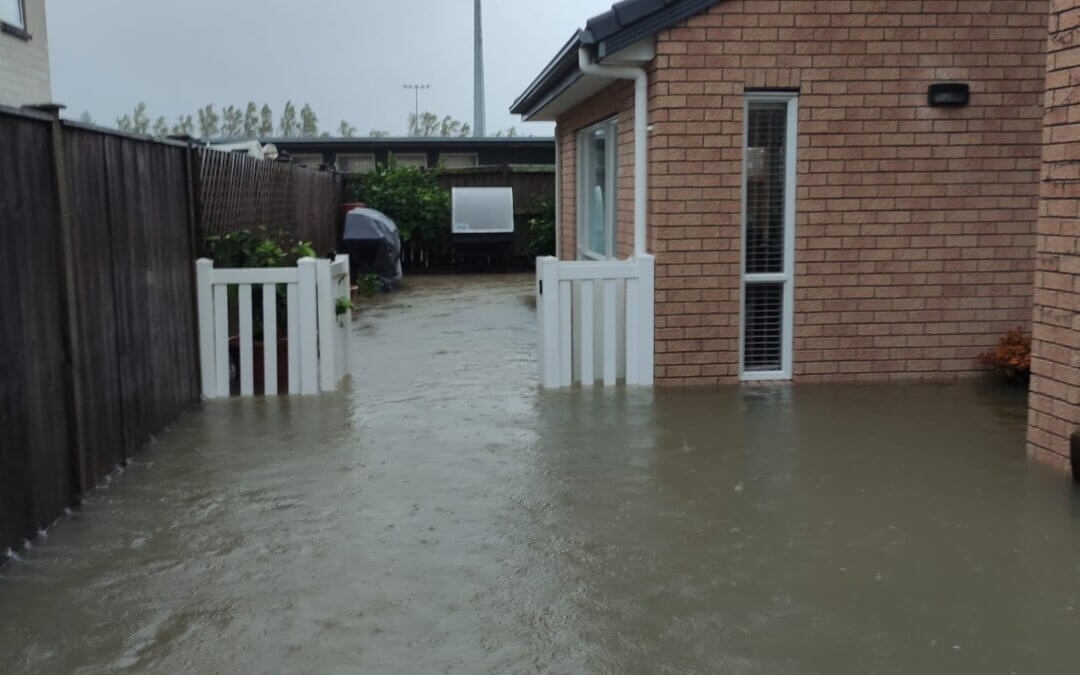Summer storms bring heavy rainfall, which, while refreshing, can also cause serious damage to homes and properties. Flooding, whether from flash floods or persistent rainfall, introduces risks far beyond just water damage. As floodwaters inundate homes and commercial buildings, they bring along a wide range of contaminants, including sewage, bacteria, chemicals, and debris. These contaminants pose a significant threat to both the structural integrity of your property and the health of anyone who comes into contact with them.
The Common Contaminants After Flooding:
- Sewage and Wastewater: Floodwaters often carry sewage from damaged or overwhelmed sewage systems or across lawns or gardens containing animal faecal matter. This not only presents an immediate health risk due to the pathogens and bacteria present but can also linger in the building materials. Exposure to contaminated water can lead to serious diseases such as cholera, dysentery, and hepatitis.
- Bacteria and Viruses: Standing water from floods is a breeding ground for harmful bacteria and viruses. From E. coli to Salmonella, these microorganisms thrive in damp environments, posing risks of infections and other illnesses. Without prompt removal of the water and decontamination of the area, these bacteria can spread throughout the property, affecting indoor air quality and increasing the risk of disease transmission.
- Chemicals and Toxins: In areas where there are industrial sites, agricultural zones, or old buildings, floodwaters may carry harmful chemicals, including pesticides, fertilisers, oil, gasoline, and cleaning products. These substances can contaminate soil, furniture, and other property, creating long-term environmental and health hazards.
- Mould and Mildew: As floodwaters recede and moisture lingers, mould and mildew are quick to take hold in damp areas. These fungi thrive in dark, moist conditions, and can grow rapidly in places like gib walls, carpets, and upholstery. The presence of mould not only damages property but also can trigger respiratory problems, allergic reactions, and long-term health issues.
The Importance of Professional Cleanup:
Flood damage and contamination are complex issues that require more than just drying out wet areas. It’s essential to identify and safely remove hazardous substances, ensure the property’s structural integrity, and prevent the spread of mould and bacteria. Professional decontamination services are essential in ensuring a thorough cleanup process.
Decontamination experts such as CSS, use specialised equipment, cleaning agents, and techniques to remove contaminants, clean surfaces, and dry out to ensure the property is restored to a safe condition. Simply removing the water without addressing the underlying contamination could lead to further damage or even put residents at risk.
Flood Prevention Strategies and Quick Response:
- Prepare Your Property: Take proactive steps to reduce the risk of flooding before summer storms hit. Ensure that your gutters are clean and free from debris to allow water to flow properly. Install sump pumps and check that your drainage systems are functioning correctly. Consider elevating electrical appliances and valuable items above potential flood levels.
- Seal Leaks: Check for cracks and leaks in your foundation, windows, and doors. Seal any openings to reduce the amount of water that can enter your property. Adding flood barriers or sandbags around doors or lower windows can help prevent water from seeping inside during heavy rains.
- Create a Response Plan: Know how to respond quickly to flooding. If you live in an area prone to flash flooding, keep emergency supplies on hand, including sandbags, waterproof tarps, and a battery-powered pump. Record contact details on your phone of trusted contractors to help in an emergency. Being able to act fast when water starts to rise can make all the difference in reducing contamination risks.
- Act Quickly After Flooding: If flooding does occur, it’s essential to act fast. Get help to remove standing water immediately and begin cleaning and sanitising affected areas. Open windows and doors to allow for ventilation and drying. Keep the property well-ventilated to prevent mould from forming.
When to Call for Professional Decontamination:
While some immediate steps can be taken by homeowners or property managers, professional decontamination should be called for in the following circumstances:
- Water Contamination: If the floodwater has been contaminated with water that has passed over soil/grass, sewage, chemicals, or other hazardous substances, professional cleanup is essential. These contaminants pose serious health risks and require specialised handling.
- Mould Growth: If you notice any signs of mould or mildew, it’s crucial to have it addressed quickly. Mould can cause significant health issues and should be remediated by experts who can safely remove it from building materials.
- Health and Safety Risks: If you’re unsure about the level of contamination or if the property is in a high-risk area for toxic chemicals or sewage contamination, it’s best to call in professionals such as CSS who can conduct a full assessment and ensure the property is safe.
Summer flooding may be a seasonal risk, but its impact on property contamination can be long-lasting if not properly managed. By understanding the common contaminants and the importance of professional cleanup, property owners and managers can safeguard their buildings, residents, and investments. Don’t wait for the floodwaters to recede and contaminants to settle—take action now to protect your property from the harmful effects of flooding.
If your property has been affected by summer flooding, contact CSS today for expert decontamination services. Our team is trained to handle all types of contamination and ensure your property is restored to a safe, healthy environment.

